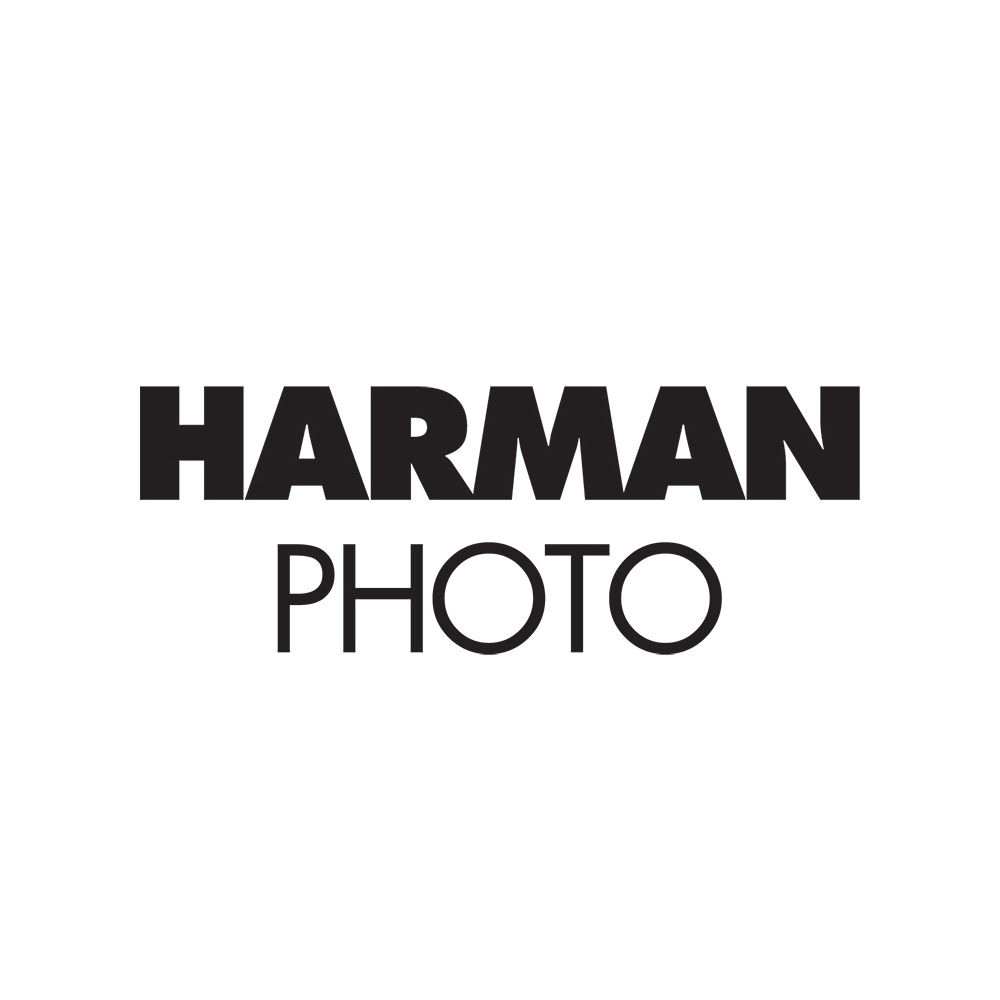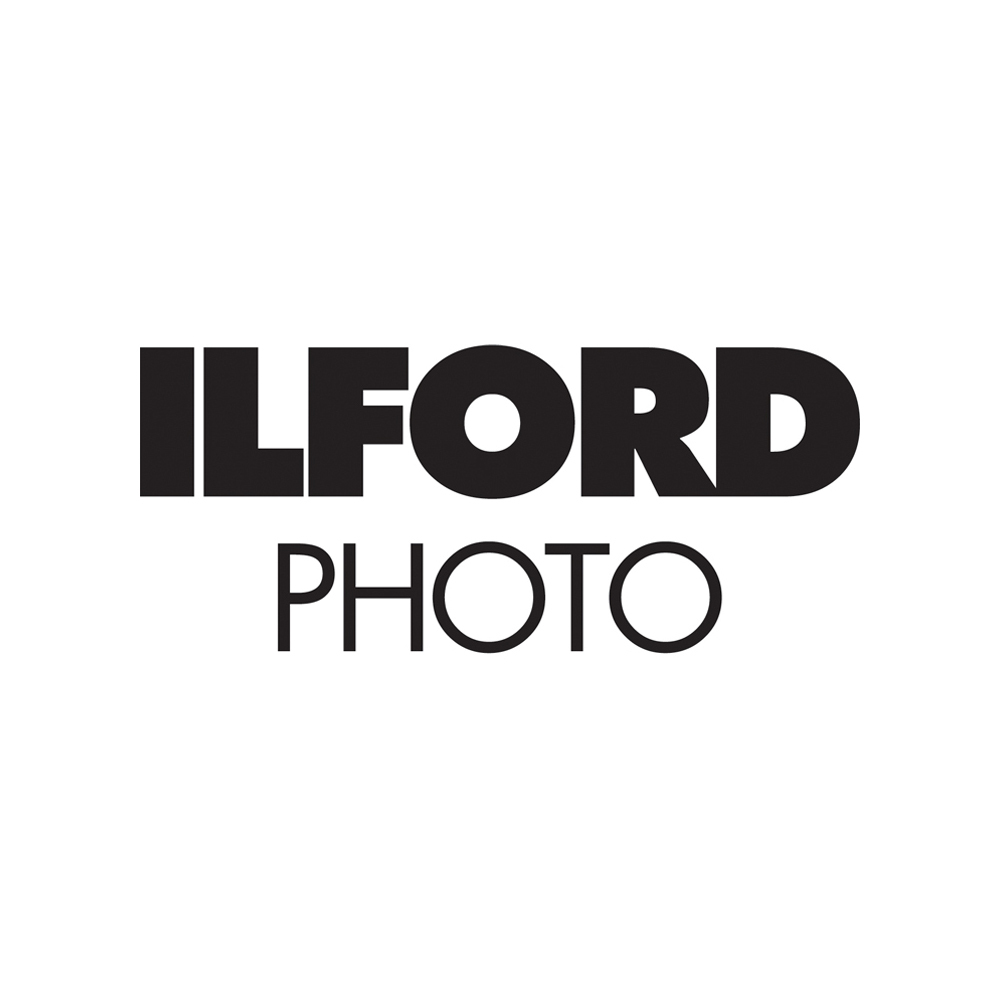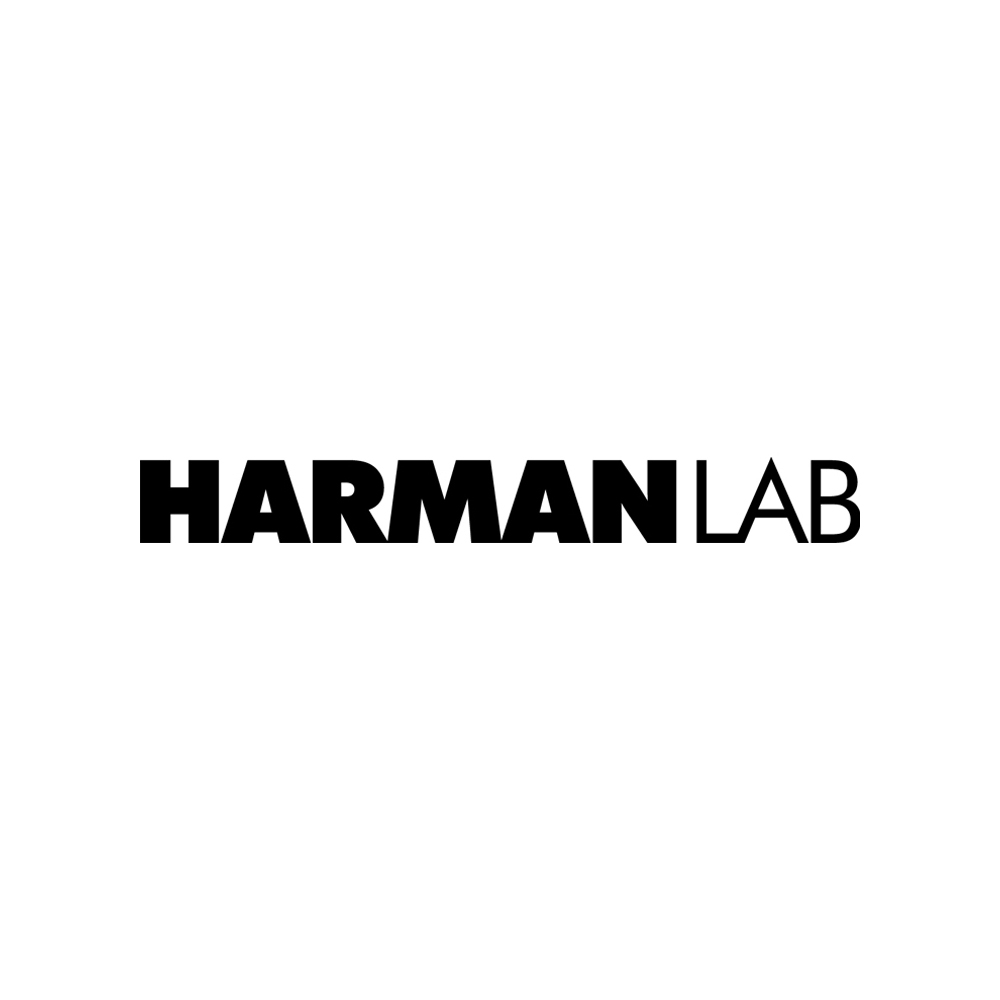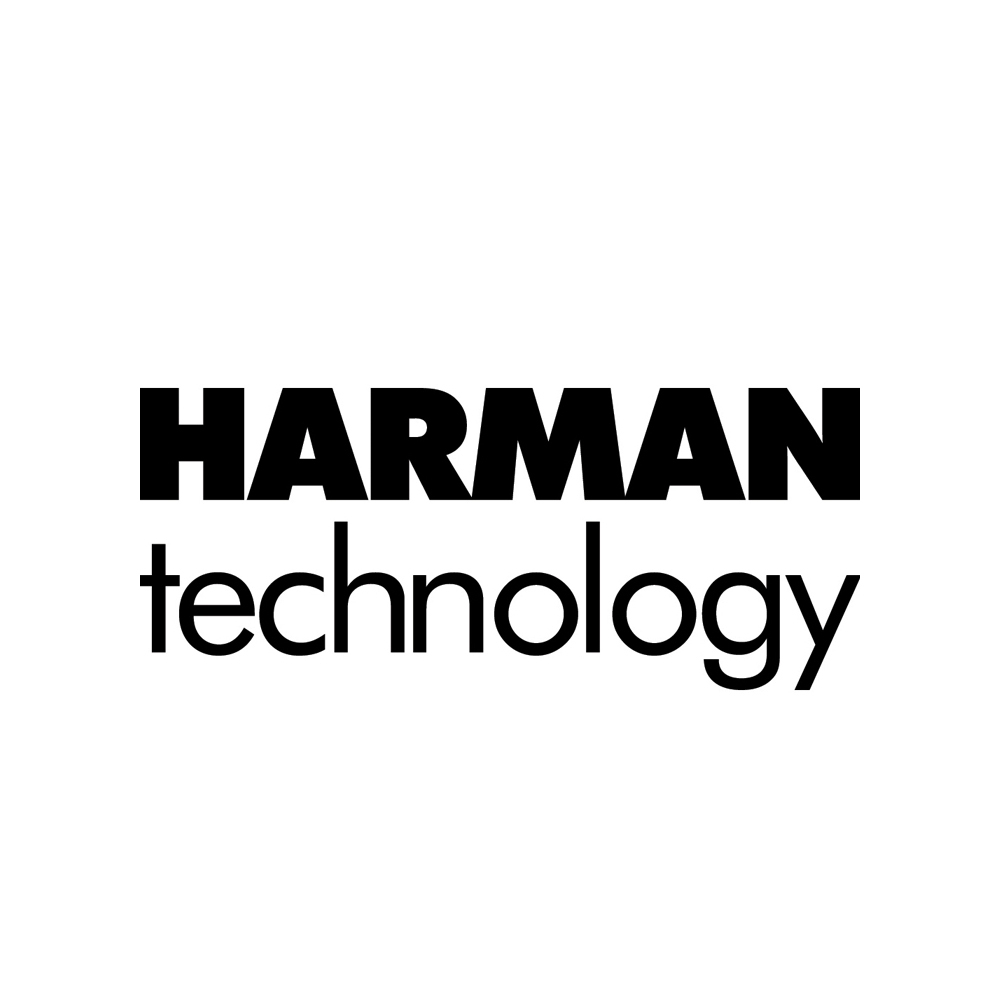Community Focus - Queer Analog Darkroom Posted On 20th May 2025 To Magazine & Community Focus

Our next Community Focus interview takes us to Berlin, where we had the opportunity to chat with Queer Analog Darkroom. They've created an inclusive space for individuals who face barriers to accessing knowledge about analog photography due to discrimination and marginalization, ensuring everyone has the opportunity to learn and create.
SECTION 1 - BACKGROUND
LET’S START EASY. TELL US A LITTLE ABOUT THE DARKROOM, WHAT IT’S CALLED AND HOW IT STARTED.
Queer Analog Darkroom (QAD) - is a self-organized, inclusive skill sharing collective for analog photography based in Berlin. The core team consists of ten people each contributing a wide range of different skills and knowledge around photography. Besides our queerness that connects us all, it is our different identities and experiences of marginalization that shape our collective work and perspectives on photography.
Spaces are not accessible to all people in the same ways. We understand Queer Analog Darkroom as a way to emphasize the interdisciplinary potential of art and activism through a collective, reflexive, and space-making process. Photographic work, especially darkroom work, which is now increasingly rare, is a space that is difficult for many people to access. Structural inequalities such as classism, racism, and a cis-heteronormative majority society mean that many people are either excluded from these spaces from the start or cannot feel safe in them. As a collective we want to fight together against these structures and furthermore keep the darkroom work alive. Thus, we have built and equipped a darkroom at Oyoun, which should give photographers and people interested in photography access to darkroom work and at the same time, with numerous events, strengthen the exchange among each other.
Our goal as a QAD collective is to create spaces for a community around analog film processing and film technology through self-organized and non-commercialized work. It should be a space where we learn together and develop together step by step. In our workshops we want to share our knowledge on how to develop films and make prints independently. Participants will learn the basics of analog photography and how to use the darkroom, which should enable them to use it independently afterwards.
QAD is intended to be a space in which (analog) photography can be learned, but also to initiate discussions, work on projects together and exchange ideas. In addition to facilitating knowledge and exchange, it is a space for mutual support. This includes debates on a variety of topics, learning and unlearning, deconstruction of concepts, mutual encouragement and the opportunity to give a platform to the voice and eyes of others.This is not a space for shame. This is not a space for certainties. This is not a space for entitlement. This is a space for celebration. This is a space for togetherness.
As queer people engaged in analog photography and photographic techniques, we try to capture the diversity of everyday life of our realities and make visible the emancipatory power of these impressions through the camera. On the one hand, we contemplate this visibility as a counterweight to violent structures. On the other hand, as a collective we try to understand that the concept of visibility as such is not enough. We need to organize, because the goal of a queer-feminist and anti-colonial future requires above all the overcoming of inequality on a structural level. As Queer Analog Darkroom, we would therefore like to try to understand our own bias through a capitalist and Eurocentric reality. At the same time, we want to take spaces and give spaces - for our work, for our bodies, for our visions on a queer-feminist anti-capitalist future.
WHERE ARE YOU BASED?
During the pandemic cultural center Oyoun in Neukölln, Berlin offered to make use of their abandoned darkroom in the basement. We quickly gathered a few queer photographers who were already inspiring and connecting through instagram, to try to make the best use of this opportunity. The immediate initial thought was of course to share this with all the other great queer photographers around us.
We were not in a rush to make this an immediate perfect platform but rather something that will always be under construction. We were also aware of the limits of accessing and practicing analog photography, and that's why we knew that we have to keep reaching out to the community. The demand for a space that combines both queerness and analog photography was incredible and we were able to count 120 visitors at our opening party alone.
During the last year we as a collective observed and became a direct casualty of censorship and state-powered suppression with the defunding of cultural space Oyoun back in December, 2023. Since then we took a moment to regroup and search for a new space to continue our non-profit work to keep our efforts regarding analogue photography alive and accessible for marginalized communities.
We were incredibly lucky to have been offered a new room south of Tempelhofer Feld at Atelier Gardens, a cultural campus for pioneers of change and regenerative entrepreneurship and brokered a deal in which we again have been offered to use this new space freely to accommodate workshops, give access to an analogue darkroom and can celebrate a wider sense of intersectional communion. In exchange we have agreed to shoulder the refurbishment costs of the room and help out to photograph some events Atelier Gardens is hosting at the campus.
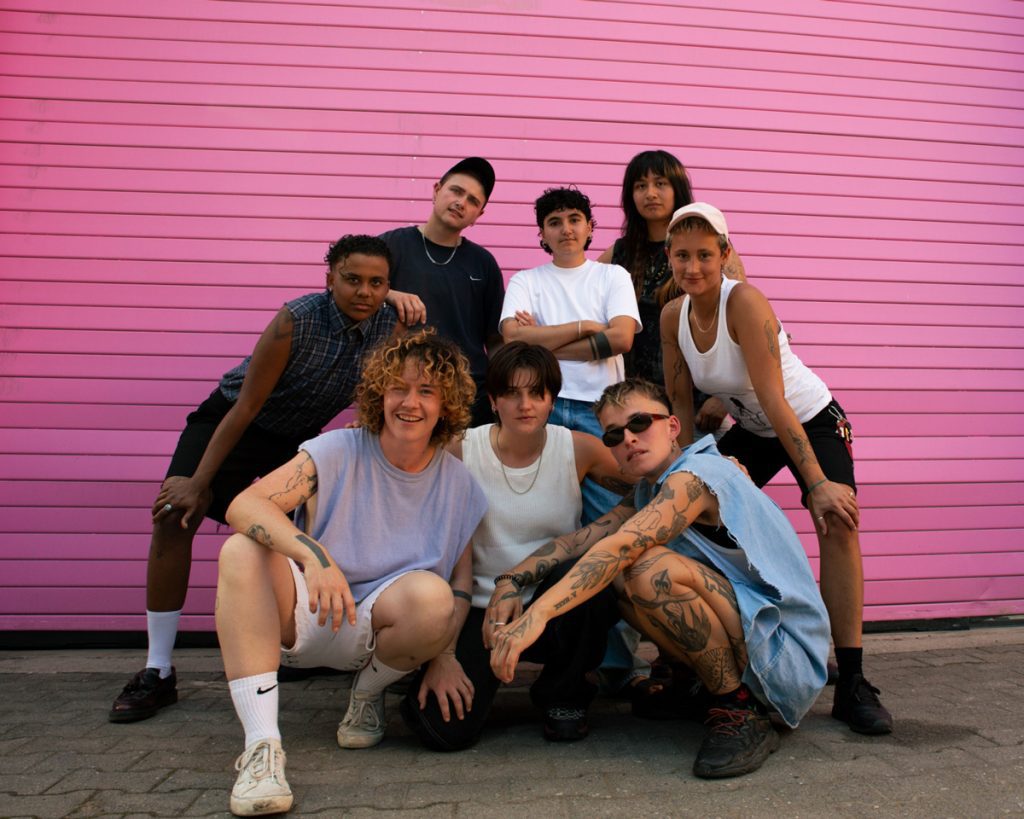
WHAT FACILITIES DO YOU HAVE? HOW MANY ENLARGERS ETC.
Currently we have a mix & match of different enlargers which were donated to us. One BW Varioscop 60 with a funky negative holder that replaces the original, a BW Durst 35mm enlarger as well as a JOBO Color enlarger and a 6x7 Durst Color enlarger. Ideally we would like to offer a good range for large format photography too but as we all know, these enlargers require space and money so we make due with what we have. Similar to this approach is our color printing situation; we were given a Colenta color printing machine but lack the funds to pay for the large amounts of chemicals it takes to run it so we do small scale tray printing in complete darkness for now. On the other hand we are really not short on film developing tanks, thongs, trays and that sort so for film developing we have a really sweet set up.
WHAT IS THE BEST PIECE OF PRINTING TIP OR ADVICE YOU HAVE EVER RECEIVED?
To not aim for the blackest black and whitest white, as is taught in a lot of academic and heteronormative places. It’s boring and puts us away from all the layers of grey, and all the layers of different energy a photo can have. Of course, contrast is great, but sometimes a moment, a photo, has another energy the photographer wants to embrace. And sometimes a photo even has a few, why not explore all of them and decide how we want the photo to be shown?
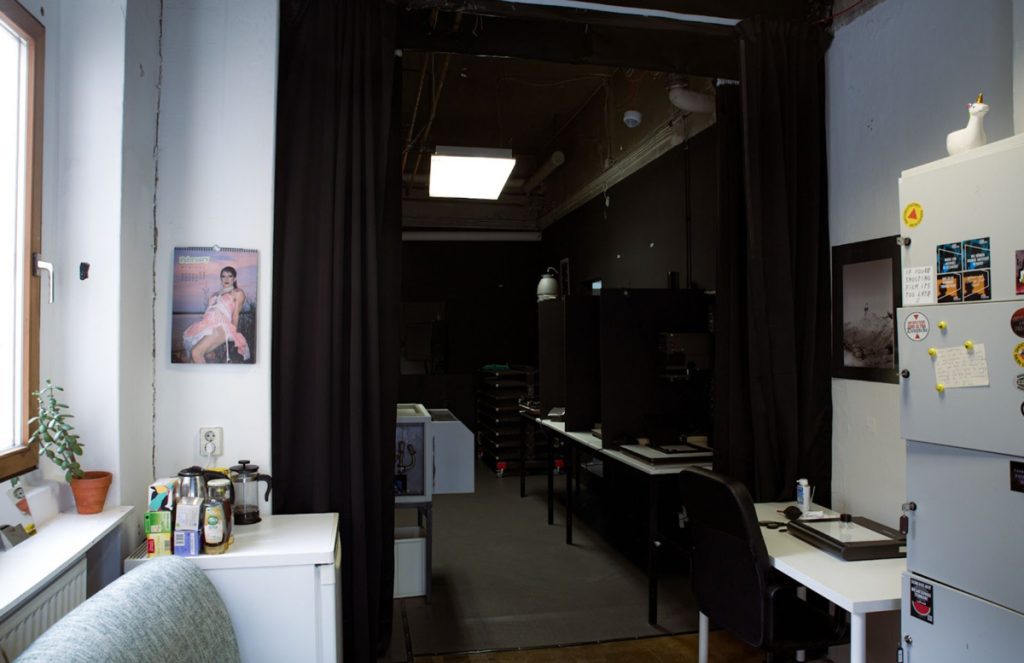
WHO CAN USE THE SPACE?
Spaces around analog photography can be very white, cisgendered-male and heteronormative. This makes it accessible only for those who already profit a lot from patriarchal structures. With QAD we want to create a space where those who otherwise struggle to have access to knowledge around (analog) photography due to different discriminatory experiences and marginalization can gain access.
WHAT’S THE BEST WAY FOR PEOPLE TO GET IN TOUCH WITH YOU?
Reach out to us via mail (queeranalogdarkroom@gmail.com) or find us on Instagram (@queeranalogdarkroom).
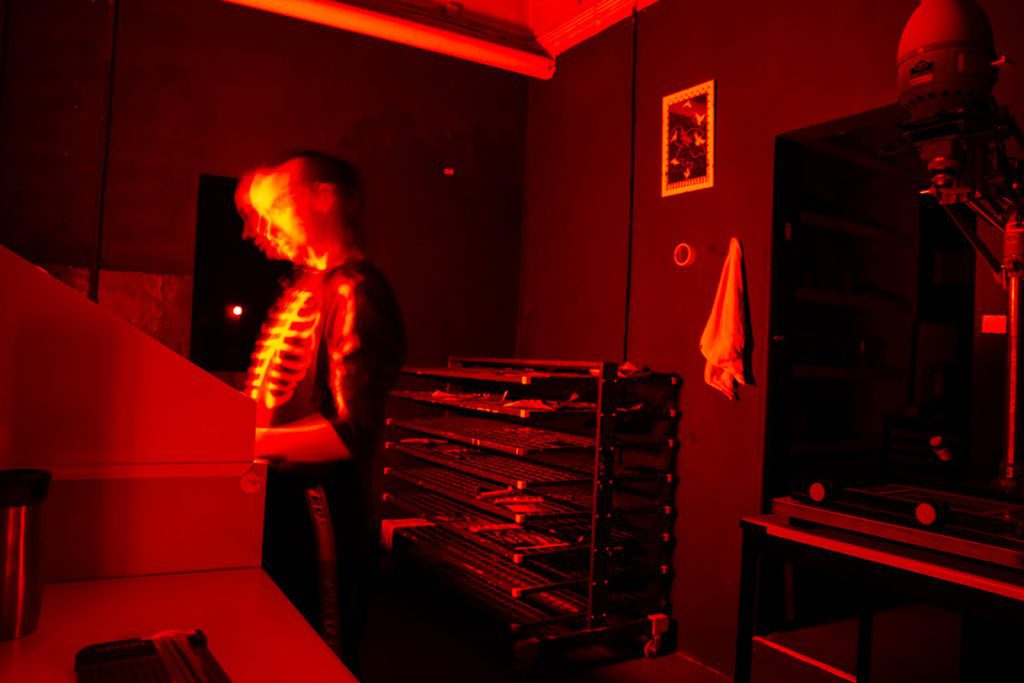
WHAT CAN THEY EXPECT WHEN THEY VISIT AND DO THEY NEED ANY EXPERIENCE TO COME ALONG?
People can come with any experience in darkroom usage or none, we’re happy to share skills and resources in any form. Depending on our capacities, we offer workshops for beginners & advanced (B&W tray printing, B&W film development, Color film development & Color tray printing). But we also offer workshops or meetings where we talk about for example visual language and the practice of intimacy and visibility. Therefore it’s not solely about technical darkroom printing and with that “beginners” vs. “advanced”, but rather sharing all kinds of sources, even if it is just sharing space and (un)learning from each other. People can expect a safe and fun environment, first and foremost.
DO YOU CHARGE A MEMBERSHIP OR ANY FEES?
We are a donation-based, self-organized collective without a regular source of income. Currently, we are in the founding phase of an official organization and plan to apply for funding in the future. Since our collective is relatively new, we are in the testing phase of a membership system with six intermediate/advanced analog photographers. Once this phase is complete and we’ve refined the system, it will be open to everyone.
To become a member, individuals must first complete a safety and printing workshop. Monthly membership fees, workshops, and darkroom usage are based on a sliding scale, allowing each member to decide what they are able to contribute. With this approach, we aim to make the darkroom accessible to as many people as possible.
We believe in redistributing resources, dismantling hierarchies, and fostering collective care. If we generate proceeds, for example from our quarterly fundraiser events called “Queeruption” or from our yearly published calendar, we always donate a portion to organizations that support people in need or individuals. These donations reflect our commitment to redistributing resources and building networks of care and resistance.
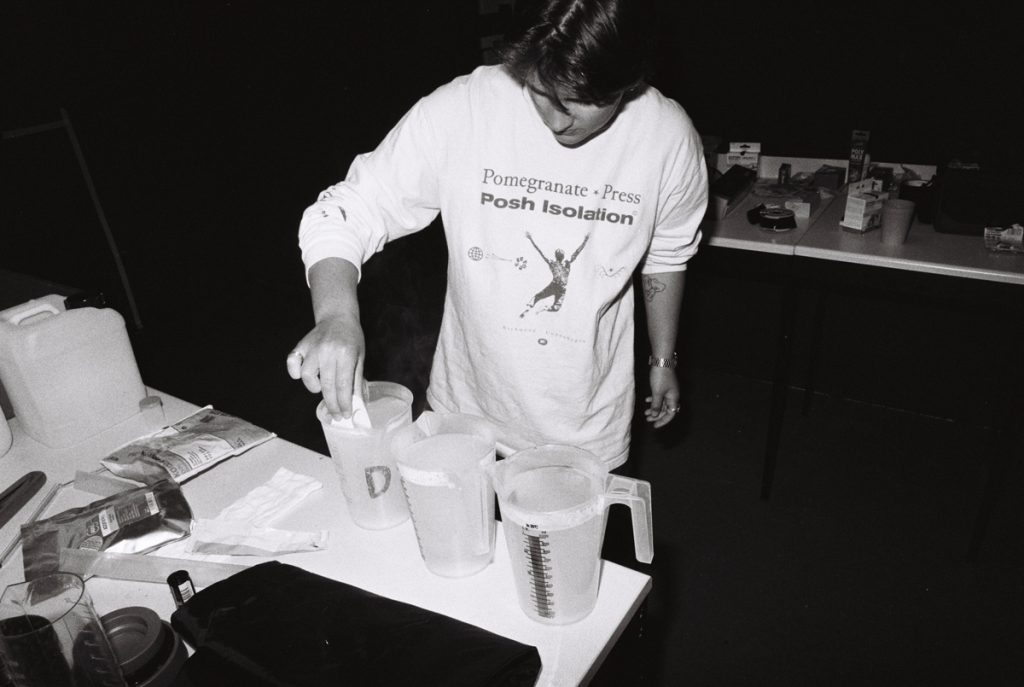
WHY SHOULD PEOPLE COME ALONG?
For us, collective work is an act of resistance against the competition and individualism that capitalism forces upon us. In a world that prizes isolation and ownership, especially in photography, we choose solidarity over loneliness. Queer Analog Darkroom is not just a space to create—it’s a space to fight back, to build community, make friends, and share radical inspiration.
We learn from one another—whether it's honing darkroom skills or critically interrogating the power structures that shape photography, a medium deeply entangled in colonialism and exploitation.
Our space isn’t just for fun; it’s a platform for political education, for dismantling oppressive systems, and for collective action. We don’t just take photos—we resist, we reflect, and we build networks of care, liberation, and rebellion.
AS THIS IS AN ILFORD INTERVIEW IT WOULD BE REMISS OF US NOT TO ASK ABOUT YOUR FAVOURITE ILFORD DARKROOM PRODUCTS.
Definitely Multigrade Fibre Warmtone Semi-Matt Paper.
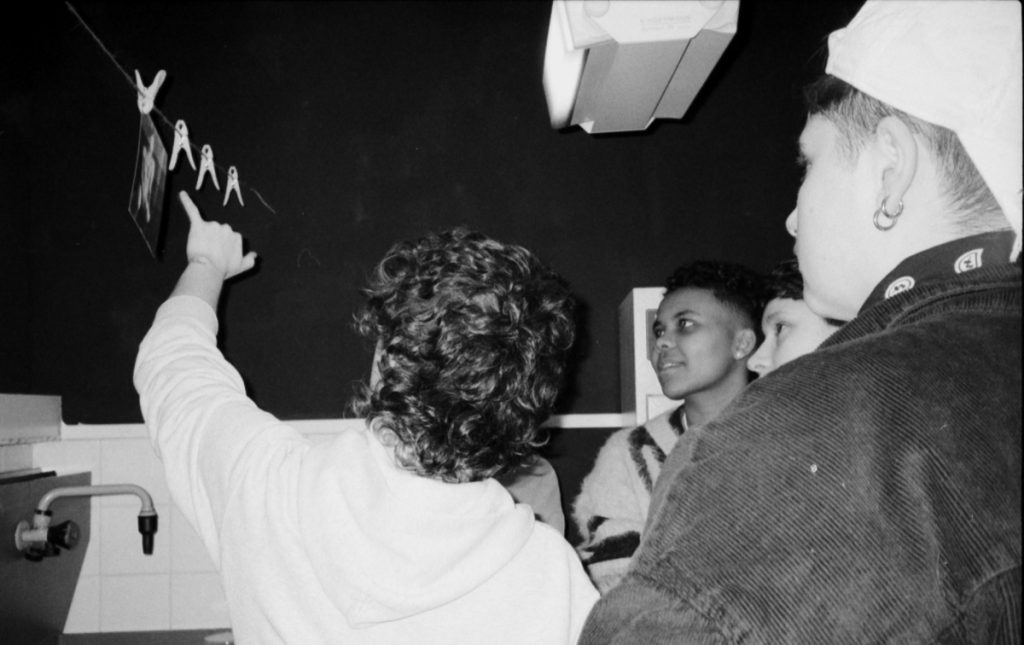
SECTION 2 - SHOUT OUTS
We all need a bit of inspiration and love so this is your chance to tell the community about yours – from the darkroom printers whose work inspires you, the labs you trust with your film, your ‘go to’ film photography stockists, your favourite community darkrooms or just anyone in the community who you feel deserves a special mention.
GIVE A SHOUTOUT TO YOUR PERSONAL FAVOURITE RETAILER.
Definitely Foto Kotti and Fotoimpex.
ARE THERE ANY DARKROOM PRINTERS THAT YOU ADMIRE?
Beirut Print Making Studio (@beirutprintmakingstudio) and @linanalog_ (@studioalhara).
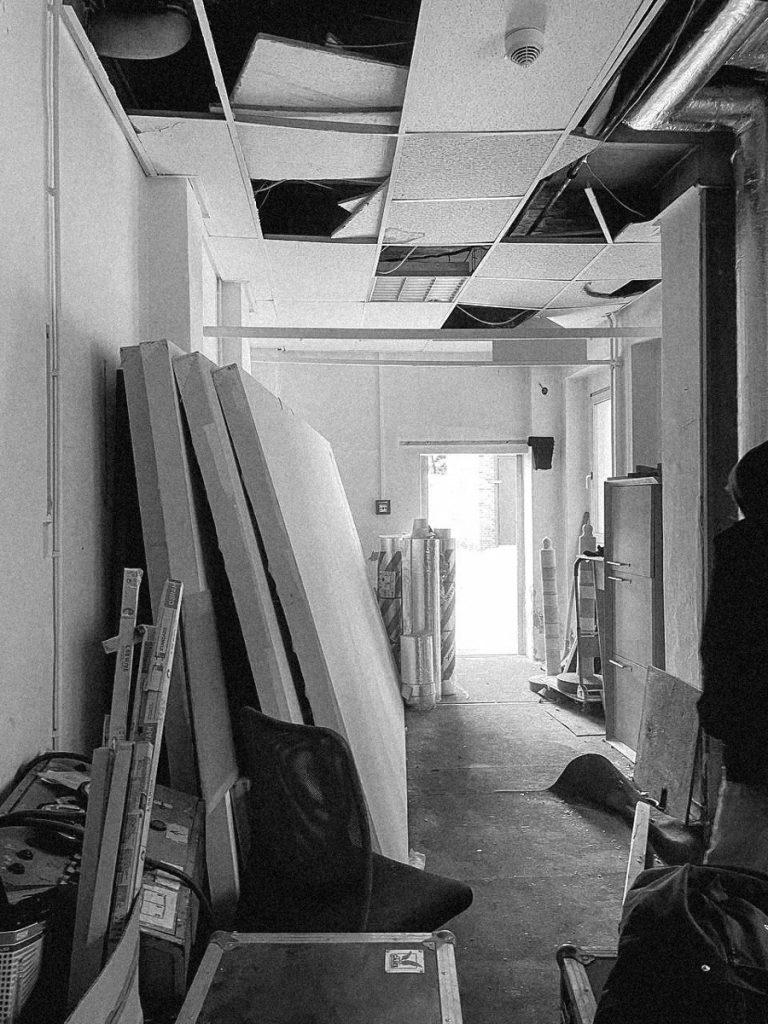
GIVE A SHOUT OUT TO YOUR FAVOURITE PHOTOGRAPHY/DARKROOM YOUTUBE CHANNELS.
AND FINALLY…
NOMINATE ONE OTHER PERSON YOU THINK SHOULD FILL IN THIS FORM AND WE WILL REACH OUT TO THEM.
Fotohane Darkroom (if a collective) and if a person then Tanya Traboulsi.
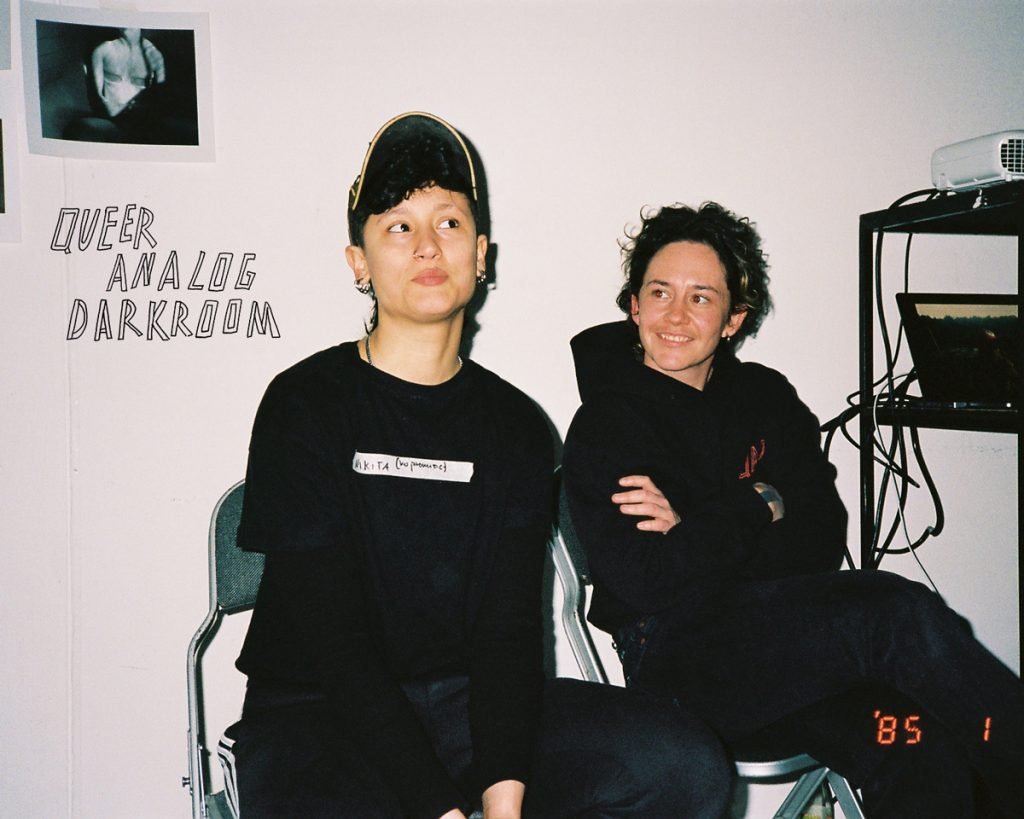
About The Author

Queer Analog Darkroom
Queer Analog Darkroom is a Berlin-based collective founded on the values of community, solidarity, and resistance. We believe in the power of analog photography as a means of self-expression, political engagement, and collective care.
Since our formation in early 2023, we’ve faced many challenges, including the sudden loss of our space when Oyoun, a cultural centre supporting marginalized communities, was hit by significant funding cuts. These cuts were linked to Oyoun’s associations with groups like Jewish Voice for Peace, and their critical stance on Israeli policies, particularly in relation to Palestine. This political conflict led to Oyoun losing its funding, disrupting many collectives, including ours.
Despite this setback, our commitment to creating an inclusive and queer-focused darkroom remains stronger than ever. We are a diverse group of ten photographers united by the desire to capture the richness of queer life through our lenses. Beyond developing film, we challenge the hierarchies and gatekeeping that often dominate the world of photography, creating a space for marginalized voices to thrive.
With the support of our community, we were renovating and opening a new darkroom at Atelier Gardens, Berlin. Through workshops, events, and our ongoing projects, we aim to disrupt oppressive structures and make analog photography more accessible—especially within the queer community.

